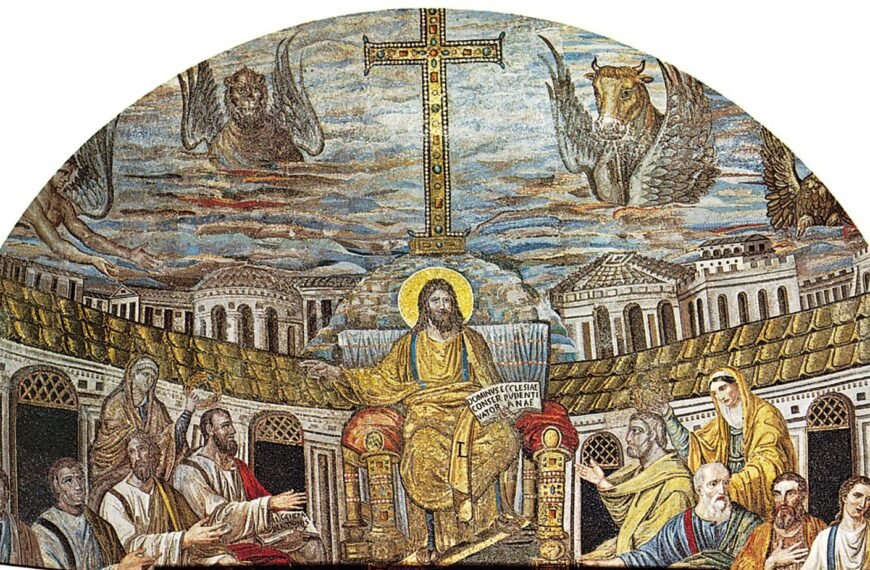The Importance of Understanding Paul’s Age during Jesus’ Death
Understanding the age of the apostle Paul during Jesus’ death is crucial for gaining a deeper insight into the biblical narrative and the early Christian movement. Paul, who played a significant role in spreading the teachings of Jesus, provides valuable perspectives and firsthand accounts of the life and ministry of Christ. By knowing Paul’s age during this pivotal event, we can better comprehend his experiences, motivations, and the historical context in which he operated.
**One of the key reasons why Paul’s age is important is the impact it had on his spiritual journey.** Paul, originally named Saul, was a devout Jew who initially persecuted early Christians. However, his encounter with the risen Jesus on the road to Damascus transformed his life and led to his conversion to Christianity. Understanding that Paul was a contemporary of Jesus and witnessed his crucifixion at a relatively young age helps us grasp the profound nature of this transformative experience and the subsequent fervor with which Paul dedicated himself to spreading the Gospel.
**Another significant aspect is the unique perspective Paul gained by being part of a different generation than Jesus.** While Jesus’ earthly ministry primarily focused on the Jewish community of that time, Paul’s teachings extended to a wider audience, including Gentiles. Paul’s age during Jesus’ death allowed him to bridge the gap between the historical Jesus and the emerging Christian movement, providing valuable insights and interpretations that were relevant to the diverse cultural and religious backgrounds of his audience.
Furthermore, **Paul’s age during Jesus’ death sheds light on the challenges and struggles he faced as an early Christian leader.** Being a relatively young convert, Paul encountered opposition from both Jewish authorities and his fellow Christians who were skeptical of his sudden transformation. His youthfulness and zeal for spreading the Gospel played a significant role in shaping his missionary journeys and the letters he wrote to various Christian communities. Understanding Paul’s age helps us appreciate the courage, determination, and resilience he displayed in the face of adversity.

In conclusion, understanding Paul’s age during Jesus’ death is essential for comprehending the broader narrative of the early Christian movement. It provides valuable insights into Paul’s personal journey, his unique perspective as a contemporary of Jesus, and the challenges he faced as a young convert and missionary. By delving into the details and nuances of Paul’s age, we can deepen our understanding of the biblical texts and gain a greater appreciation for the enduring legacy of his teachings.
Section 1: Paul’s Early Life
1.1 Childhood and Education
Paul, also known as Saul of Tarsus, was born in the early part of the first century AD in the city of Tarsus, which is located in modern-day Turkey. He was born into a devout Jewish family, and from an early age, he received a comprehensive education in Jewish law and traditions. **His education was overseen by a renowned rabbi named Gamaliel**, who was well-respected for his knowledge and wisdom. Under Gamaliel’s guidance, Paul studied the Torah, the Hebrew Scriptures, and the intricate details of Jewish customs and practices.
**Paul’s upbringing in Tarsus also provided him with exposure to Greco-Roman culture**, which played a significant role in shaping his worldview and communication style. This unique blend of Jewish and Hellenistic influences would later influence his approach to spreading the teachings of Jesus Christ.
1.2 Conversion to Christianity
While Paul was initially a staunch opponent of the burgeoning Christian movement, his life took a dramatic turn when he encountered Jesus Christ in a powerful vision on the road to Damascus. **This life-altering encounter occurred when Paul was in his early thirties**, around 33-35 AD, a few years after Jesus’ crucifixion and resurrection. In this vision, Jesus revealed himself to Paul and called him to become his disciple and an apostle to the Gentiles.
Paul’s conversion to Christianity was a profound and transformative experience. **He underwent a radical change in his beliefs, abandoning his former Pharisaic zeal and dedicating himself wholeheartedly to spreading the Gospel of Jesus Christ**. This conversion marked a pivotal moment in Paul’s life and set him on a new path as one of the most influential figures in the early Christian movement.
Section 2: Paul’s Ministry and Relationship with Jesus
2.1 Paul’s Missionary Journeys
**Paul’s missionary journeys** were pivotal in spreading the teachings of Jesus and establishing Christian communities throughout the ancient world. He embarked on several journeys, which took him to various regions, including Asia Minor, Greece, and Rome. These journeys were characterized by Paul’s tireless efforts to preach and teach the Gospel, often facing opposition and persecution.
One of the most remarkable aspects of Paul’s missionary journeys was his ability to adapt his message to different cultures and audiences. He understood the importance of contextualizing the Gospel, making it relevant to people from diverse backgrounds. This approach allowed him to effectively communicate the message of salvation and establish vibrant Christian communities in places like Corinth, Ephesus, and Philippi.
**One notable journey** was Paul’s trip to Athens, where he engaged with philosophers and intellectuals in the marketplace of ideas. He used their own cultural references to bridge the gap and introduce them to the message of Jesus. This encounter resulted in the conversion of some Athenians and demonstrated Paul’s intellectual prowess and ability to engage with different worldviews.
**Another significant journey** was Paul’s voyage to Rome. Despite facing numerous challenges, including shipwrecks and imprisonment, he remained steadfast in his mission. In Rome, Paul had the opportunity to share the Gospel with influential figures, including Roman officials, further expanding the reach of Christianity.
2.2 Paul’s Teachings and Letters
Paul’s teachings and letters form a substantial part of the New Testament and provide valuable insights into Christian theology and practice. His writings were addressed to various early Christian communities and individuals, addressing specific issues they faced and offering guidance and encouragement.
**One of Paul’s notable teachings** is his emphasis on the concept of salvation through grace. He emphasized that salvation is a free gift from God, not earned through human effort. This teaching challenged prevailing religious beliefs and practices, emphasizing the transformative power of faith in Jesus Christ.
**Paul’s letters** also addressed practical matters within the early Christian communities. For example, in his letter to the Corinthians, he addressed issues of unity, spiritual gifts, and moral conduct. His letter to the Romans expounded on the righteousness of God and the relationship between faith and works.
**Paul’s teachings and letters** continue to be studied and revered by Christians worldwide. They provide guidance on topics such as love, forgiveness, community, and the role of believers in society. Paul’s writings have had a profound influence on Christian theology and have shaped the understanding of the faith for centuries.

Section 3: Paul’s Age during Jesus’ Death
3.1 Historical Context
To understand Paul’s age during Jesus’ death, it is important to delve into the historical context of that time. Jesus was crucified in the early 30s AD, which means that Paul would have been alive during this period. However, it is important to note that Paul did not become a follower of Jesus until after Jesus’ resurrection. Before his conversion, Paul, then known as Saul, was a staunch persecutor of Christians. It was only after his encounter with Jesus on the road to Damascus that he underwent a radical transformation and became one of the most influential figures in early Christianity.
While the exact age of Paul at the time of Jesus’ death is not mentioned in the Bible, scholars estimate that he was likely in his early thirties. This estimation is based on the fact that Paul began his missionary journeys around the age of 35, which would suggest that he had already been a follower of Jesus for a few years by that time. This aligns with the general timeline of events in the New Testament.
3.2 Biblical Interpretation
The Bible does not explicitly state Paul’s age during Jesus’ death, so we must rely on biblical interpretation and historical context to make an educated estimation. The apostle Paul, in his own writings, provides some insight into his timeline and the years that elapsed between his conversion and his ministry. In Galatians 1:18-19, he mentions that after his conversion, he spent three years in Arabia before returning to Damascus. This suggests that some time had passed since his encounter with Jesus.
Furthermore, in his letter to the Galatians, Paul mentions that he went up to Jerusalem to meet with Peter, staying with him for fifteen days (Galatians 1:18). This meeting took place three years after his conversion (Galatians 1:21), implying that some additional time had passed. These references indicate that a significant period of time had elapsed between Paul’s encounter with Jesus and the start of his ministry.
While the exact age of Paul during Jesus’ death remains uncertain, these biblical clues and historical context suggest that he was likely in his early thirties. This estimation aligns with the timeline of events and provides a reasonable understanding of Paul’s age during this significant period in Christian history.

Rockin’ the faith, one verse at a time!
Growing up, the Bible’s stories deeply impacted me. Now, with over 15 years of preaching experience, I blend timeless teachings with modern technology, making them relevant for today’s world.
Bible Hub Verse is my platform to share historical insights and thought-provoking articles, exploring both familiar and uncommon Christian topics. My passion is building a welcoming online space for everyone to learn, grow in their faith, and discover the Bible’s enduring message.
Join the journey!
God bless you.









I BECAME A CHRISTIAN AFTER BAPTISM IN 1969. I TURNED TO ALCOHOL AND BECAME A STREET DRUNK 19 YEARS AGO. I SAID, LORD TAKE IT AWAY, AND HE DID. I AM SOON TO BE 85.
Dear Alexander,
Thank you for sharing your powerful testimony. It’s truly inspiring to hear how God has worked in your life — from your baptism in 1969, through the trials you faced, and into the victory and freedom you have today. Your story is a reminder of the Lord’s endless mercy, His healing power, and His faithfulness to answer when we call upon Him.
Rejoicing with you as you approach 85, a living testament to His grace! May He continue to bless and strengthen you every day.
In His Name,
Preacher Sonny